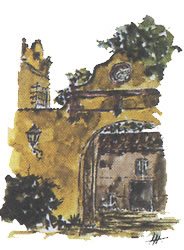Mycoplasma bovis - Molecular diagnosis (PCR)
Mycoplasma bovis is the species most pathogenic bovine mycoplasma in Europe and US causing bovine pneumonia, arthritis, genital alterations and abortions, which has a great interest in the economic impact on cattle and milk production. In cattle losses are caused by respiratory diseases because this bacteria is responsible for the third or fourth of respiratory infections. In addition, affected animals are weight loss, with consequent devaluation of channels. Through the global transport and animal sperm it has spread to many countries.
This mycoplasma was discovered in the US to cause mastitis similar to that produced by Mycoplasma agalactiae box, and named Mycoplasma bovimastitis, and later Mycoplasma agalactiae subsp. bovis. By 16S rRNA genomic studies went on to be considered a distinct species.
Although it is a bacterium that lacks a cell wall without periplasmic space shield, and a very small genome, it is highly resistant to environmental conditions, and can survive up to 2 months in the cooled milk (4 ° C), 2 weeks in water, 37 manure days, 2 days in wood and metals, and 7 days in rubber and glass.
A very important to understand why it can be healthy carrier state in animals is the ability of antigenic shift in its cytoplasmic membrane. This is due to a surface antigenic lipoprotein (VSPs Variable lipoprotein surface antigens), that allow antigenic variation. This mycoplasma species this occurs with high frequency through the phenotypic change of Vsp by DNA rearrangement. The specific mechanisms of pathogenesis are unknown. It can adhere to neutrophils and macrophages, persist and multiply on the surface of these cells.
Mycoplasma bovis can act as primary pathogen or secondary pathogen. Mycoplasmas often infect weakened animals affected by respiratory viral or bacterial infection (BRSV -virus Respiratory syncytial bovino-, PI-3 -Parainfluenzavirus bovine Adenovirus type 3, BVDV -virus bovina- viral diarrhea, Pasteurella multocida, Mannheimia haemolytica, Arcanobacterium pyogenes, Haemophilus somnus, Mycoplasma dispar, Mycoplasma canis and Ureaplasma diversum). There is also evidence that Mycoplasma bovis can infect healthy cattle and cause signs of disease. Mycoplasma can be found in respiratory secretions of normal healthy cattle and cattle sick. Even milk cows without signs of respiratory disease, they may have mycoplasma in their respiratory system. It is considered that mycoplasmas may extend from a few animals carrying the bacteria to other animals in the flock through respiratory secretions by direct contact and through aerosols. Another transmission path may be through feeding calves infected with Mycoplasma bovis milk.
Mycoplasma bovis causes chronic persistent infection in calves and cows. It can cause various clinical manifestations, such as mastitis in cows and arthritis and pneumonia in young animals, genital abnormalities, abscesses, conjunctivitis, ear infections and meningitis. The symptoms observed in infected animals are fever, depression, loss of appetite, hyperventilation, shortness of breath, nasal bleeding and coughing.
Signs of respiratory disease include fever, tachypnea, loss of appetite, cough, nasal bleeding. The infection can occur in the form of dairy cows outbreak some of them develop otitis, arthritis tenosynovitis or secondary respiratory infection, which generally respond poorly to treatment. At necropsy involvement suggested by the presence of condensed lobes firm, dark red with yellowish nodules or enlarged whitish. Infected animals generally have arthritis in at least one joint with accumulation of yellowish liquid and fibrin in the joint.
In some studies of prevalence and importance of Mycoplasma bovis compared with other causing bovine respiratory disease (Mycoplasma bovis virus, bovine viral diarrhea, bovine respiratory syncytial virus and parainfluenza virus type 3) infectious agents, by seroconversion and bacterial isolation liquid of boncoalveolar washing, they have shown that Mycoplasma bovis was the most frequent outbreaks of bovine respiratory disease etiologic agent initially and widely spread in the affected units. A bacterial culture and comparing molecular detection by PCR with swabs nasal swab for detecting Mycoplasma bovis, demonstrated the usefulness of PCR.
Diagnosis
Diagnosis can be made by culturing or by molecular detection by PCR. The problem of culture is its slow growth and the need for further identification, a process that requires quick to take appropriate action and prevent the development of an outbreak diagnosis. Therefore, molecular diagnosis by PCR is the preferred method.
It should be noted that it may be present in healthy animals, so in the absence of respiratory disease manifests, to give significance to the finding must be sought the existence of other signs such as those of arthritis, tenosynovitis, ...
Treatment
Mycoplasma bovis infections can be treated with antibiotics, such as tetracyclines and macrolides. Do not use any beta-lactam (penicillins). It is very important in early detection and treatment, and perform prolonged treatment (10-14 days).
Prevention
Mycoplasma bovis may be present in the absence of symptoms of respiratory disease. Stressful situations can trigger respiratory disease. These situations must be considered: nutrition and inadequate intake of minerals or overcrowding, as in the so - called "shipping fever , " infection. It can also occur due to co - infection with respiratory viruses. There are vaccines, but have not been proven effective. The immune response to glyceraldehyde-3-phosphate dehydrogenase protein antigen, this antigen makes considered as a possible candidate for a vaccine.
Tests in IVAMI:
- Molecular diagnosis: PCR for Mycoplasma bovis.
Recommended sample:
- Respiratory infection: nasal swab exudate taken with.
- Arthritis joint fluid taken by puncture.
- Milk: milk sterile container (10 mL).
Preservation and shipment of sample:
Refrigerated (preferred) for less than 2 days.
Frozen: over 2 days.
Delivery time :
- PCR for molecular targets 24 to 48 hours of receiving the sample.
Cost of the test:
Consult ivami@ivami.com



